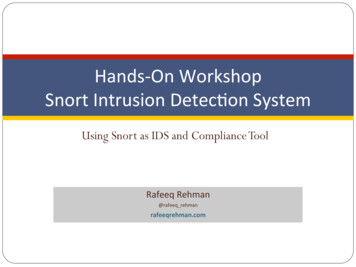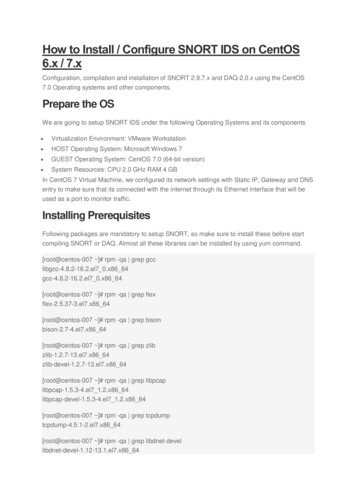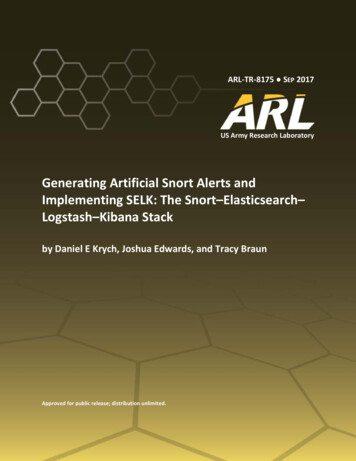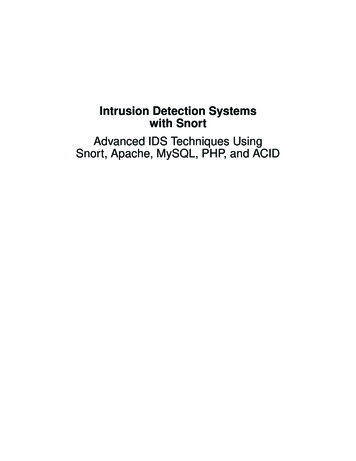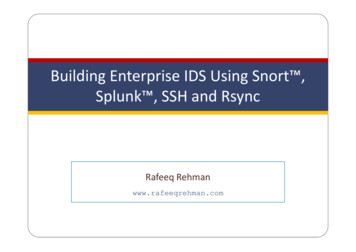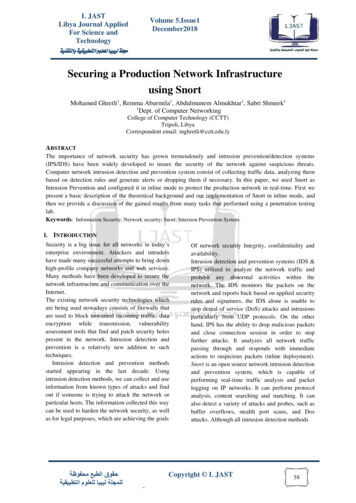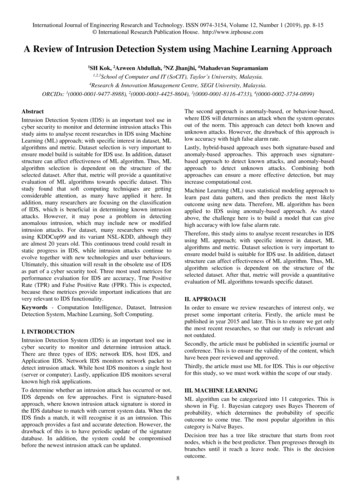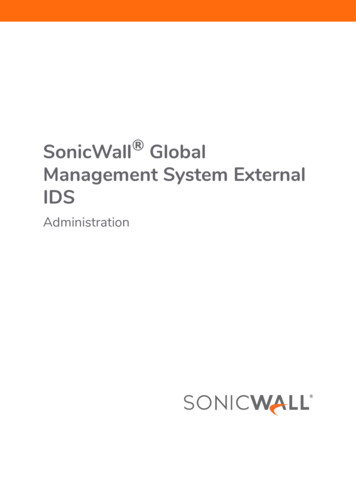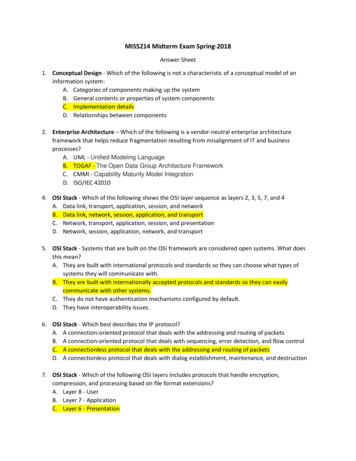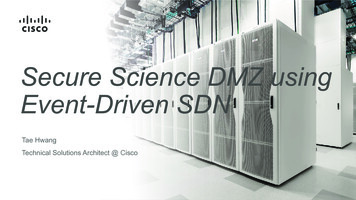Transcription
How-To GuideConfigure Snort IDS to forward logs toEventTrackerPublication Date:June 17, 2022 Copyright Netsurion. All Rights Reserved.1
Snort IDSAbstractThis guide provides instructions to retrieve Snort events based on the rules defined in the Snort configurationfile and then forward the logs to EventTracker from the syslog extension.ScopeThe configuration details in this guide are consistent with Snort 2.9 or later and EventTracker version 9.3 orlater.AudienceThis guide is for the administrators responsible for configuring the Snort IDS events to forward logs toEventTracker. Copyright Netsurion. All Rights Reserved.2
Snort IDSTable of Contents1Overview . 42Prerequisites . 43Configure Snort IDS to send logs via syslog. 4 Copyright Netsurion. All Rights Reserved.3
Snort IDS1 OverviewSnort IDS is an open-source intrusion detection system that analyze network traffics in real-time andprovides data packet logging. It detects potentially malicious activities by employing a rule-based languagethat integrates anomaly, protocol, and signature inspection methods.Netsurion monitors Snort events retrieved via syslog. Dashboard, category, alerts, and reports inNetsurion's threat protection platform, EventTracker, will benefit you in tracking possible attacks,suspicious activities, or any other threat based on rules defined in the Snort configuration file.2 Prerequisites A Linux user with root admin privilege. Snort 2.9 or later must be configured. Rsyslog must be enabled (for Linux).3 Configure Snort IDS to send logs via syslogPerform the following steps to configure Snort IDS to send logs to EventTracker.1. Log in to the server or system where you have installed and configured Snort.2. Edit the rsyslog.conf file using the command: sudo vi /etc/rsyslog.confNote:You must have sudoers permission to access the rsyslog configuration file. Copyright Netsurion. All Rights Reserved.4
Snort IDS3. Enable the TCP (or UDP) syslog reception configurations from the rsyslog.conf file.4. Include the below details at the end of the configuration file in the following format.Function*.* @ EventTracker Manager FQDN : port Example*.* ionIt defines to log all types of alerts (use *.alert to log onlyalerts)EventTracker.contoso.com It is the EventTracker Manager FQDN addressTCP/514It is the port on which the syslog server runs5. After providing the specified details, save and exit the rsyslog.conf file. Copyright Netsurion. All Rights Reserved.5
Snort IDS6. Then, restart rsyslog.conf file using sudo /etc/init.d/rsyslog restartNote:The module name may differ in different Linux versions. To enable the module, it is alwaysessential that you remove the hash symbol (#).Note:To communicate through the firewall, make sure port 514 (TCP/ UDP depending on yourselection) is enabled.7. Go to the Snort configuration file using sudo vi /etc/snort/snort.conf and edit thesyslog section under Configure output plugins. Copyright Netsurion. All Rights Reserved.6
Snort IDS8. In the syslog section, remove the hash symbol (#) to uncomment the value and provide thefollowing details in the below format.Functionoutput alert syslog: host EventTracker Manager FQDN : syslog server port ,LOG AUTH LOG ALERTExampleoutput alert syslog: host EventTracker.contoso.com:514, LOG AUTH LOG ALERTNote:If you encounter any issues by providing EventTracker Manager FQDN, you can alternativelyprovide the EventTracker Manager IP address.9. Start Snort by executing the following command.Functionsudo snort -c /etc/snort/snort.conf -i eth0ParametersDescription-cIt is used to specify the Snort configuration file-iIt defines on which interface the Snort must detect the packets Copyright Netsurion. All Rights Reserved.7
Snort IDSAbout NetsurionFlexibility and security within the IT environment are two of the most important factors driving business today.Netsurion’s managed cybersecurity platforms enable companies to deliver on both. Netsurion ManagedThreat Protection combines our ISO-certified security operations center (SOC) with our own award-winningcybersecurity platform to better predict, prevent, detect, and respond to threats against your business.Netsurion Secure Edge Networking delivers our purpose-built edge networking platform with flexiblemanaged services to multi-location businesses that need optimized network security, agility, resilience, andcompliance for all branch locations. Whether you need technology with a guiding hand or a completeoutsourcing solution, Netsurion has the model to help drive your business forward. To learn more visitnetsurion.com or follow us on Twitter or LinkedIn.Contact UsCorporate HeadquartersNetsurionTrade Centre South100 W. Cypress Creek RdSuite 530Fort Lauderdale, FL 33309Contact NumbersEventTracker Enterprise SOC: 877-333-1433 (Option 2)EventTracker Enterprise for MSPs SOC: 877-333-1433 (Option 3)EventTracker Essentials SOC: 877-333-1433 (Option 4)EventTracker Software Support: 877-333-1433 (Option 5)https://www.netsurion.com/eventtracker-support Copyright Netsurion. All Rights Reserved.8
Snort IDS is an open-source intrusion detection system that analyze network traffics in real-time and provides data packet logging. It detects potentially malicious activities by employing a rule-based language that integrates anomaly, protocol, and signature inspection methods. Netsurion monitors Snort events retrieved via syslog.
